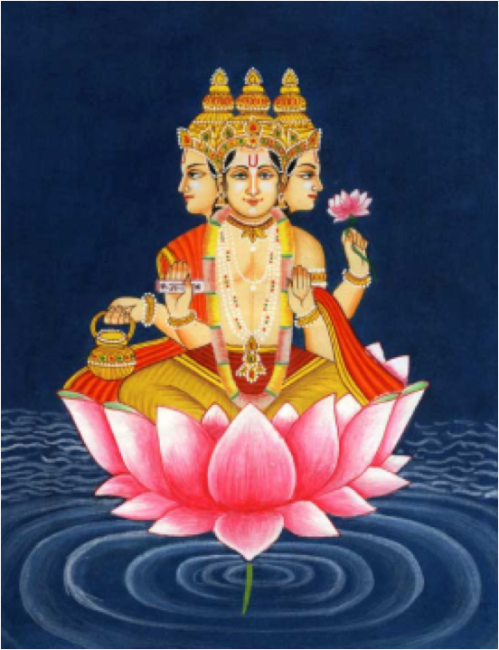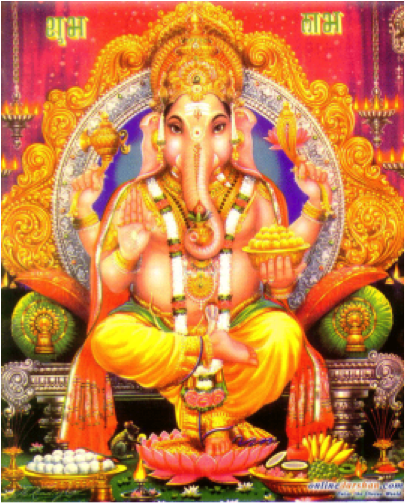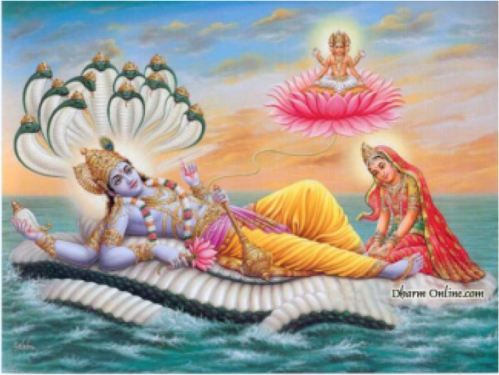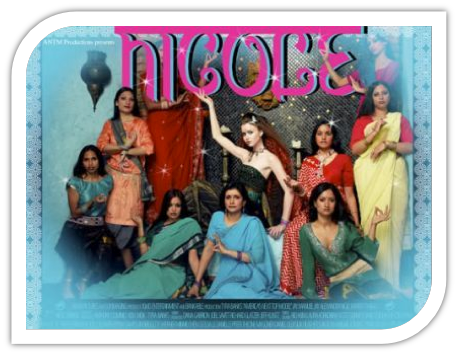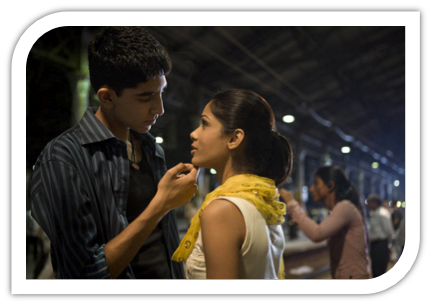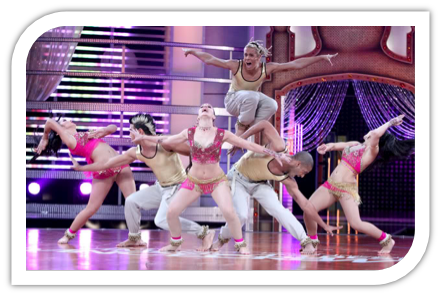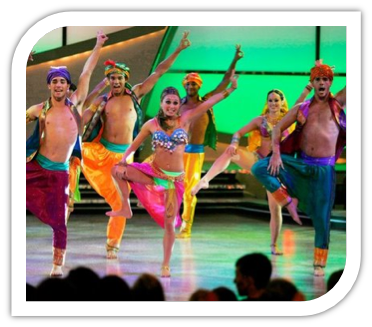Class # 2 Homework. September 7, 2009
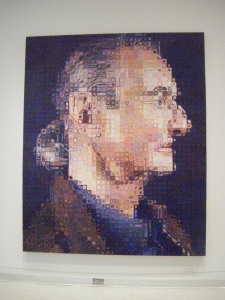
Point: Chuck Close, Roy III
This is a very good example of how the mind of an artist can put together points on a canvas and make something coherent. The specific concept used in this painting is called closure, which is the ability of the mind to “add the missing pieces” of the painting.
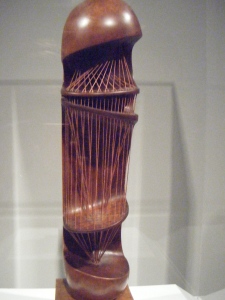
Line: Henry Moore, Stringed Figure No. 1
This use of the line is very interesting because it express movement from top of the sculpture to the bottom. It also holds the entire piece together. The lines give the sculpture life, make it more intriguing to the eye and mind.
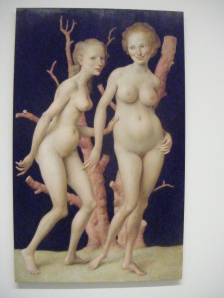
Form: John Currin, The Pink Tree
This painting shows the use of the three dimensional shapes and curving forms. The voluptuous curves used by this artist are commonly used to create the human body. The use of curves shows the artist expressions and feeling by the paintings “body language”.

Movement: Gary Simmons, Black Chalkboard
This piece is very interesting because the artist used the texture of the chalkboard to show the movement of the frog. The shades and “eraser marks” are very eye catching. They also seem to depict the movement and make the drawing seem like it’s dancing.

Color: Frank Stella, Barabjerd III
Color is considered a very important aspect of any work of art. Printer primaries colors make up most of this piece. Each color represents a different emotion. I take from the colors here is warmth, optimism, and playfulness. The color scheme really attracts a person’s eye and captures their attention.
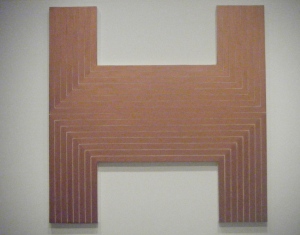
Pattern: Frank Stella, Pagosa Springs
The pattern here, as the definition says, organizes the structure of the composition. The mirroring lines give the artist a given of how the bottom part of the structure would turn out. It is a repetition but the eye does not get tired of looking at it or analyzing it.
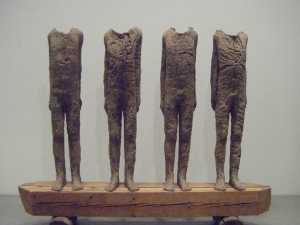
Texture: Magdalena Abakanowick, Four on a Bench
The texture of this sculpture can be seen as rough and hard. The texture of this makes it seem sad. Based on the texture it seems as if the four people would seem to be going through hard time because of how the are standing and their body language.
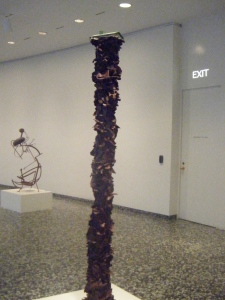
Balance: Michael Lucero, Greenhouse
This is an excellent example of balance because the artist had to place each piece of the sculpture in a specific way to keep the sculpture from collapsing especially because of its height. It is interesting because the artist uses asymmetrical balance, which is when the structure seems uneven and disorganized but appear to work in favor of its balance.
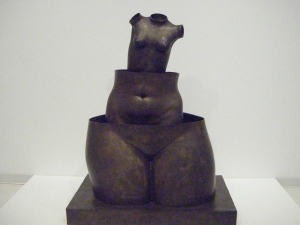
Proportion: Rene Magritte, Delusions of Grandeur
Views on the human body vary during times and this painting expresses three different ways the human body may be seen. Here the artist took “liberties” with his work of art and expressed his opinion on the human body. Se seemed to be accepting the different forms a woman’s body can be seen and making it seem beautiful.
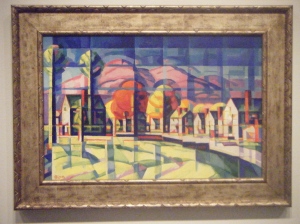
Rhythm: Oscar Bluemer, Morning Light
The rhythm here works well because the eyes start off at the left of the painting with the trees and then the eyes work their way down to the other houses. It makes the eyes go downward when looking at the painting.
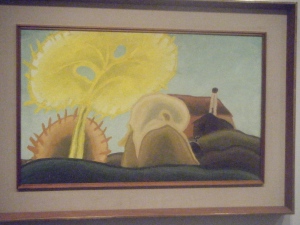
Emphasis: Arthur Dove, Haystack
The point of focus of this painting is the big yellow tree because of its size and bright color. Even though it is the first thing the eye sees it is hard to recognize what it is but the background helps to realizing what it is after analyzing the painting for a while.
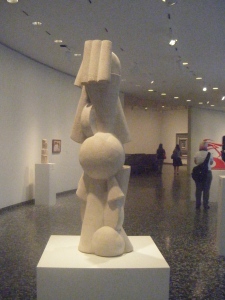
Unity: Joseph Csaky, Abstraction
In this piece there is an obvious unity of the curves, lines and forms. They come together and all achieve their original objective as principles of design. The lines cause the eyes to look downward and pause in the middle with the curve forms and then continue down. Balance also is found because the artist had to use different forms to create balance for this structure.

Composition: Stuart Davis, Tropes de Teens
This piece has many design principles put together. There is color, which are bright and constant. There are a lot of straight lines and not many curves which does not allow much fluidity. There is also emphasis on the face and black figure on the right and then eyes move back to find the four people in the background. Proportion is also seen here. The eyes on the face are different sizes and the face seems too large. The rhythm is found in the black square due to the color curves and forms. There are many things happening in this painting and cause the eye confusion on what to focus on first. But then the face catches the eyes attention and then slowly make them their way to view the entire painting.



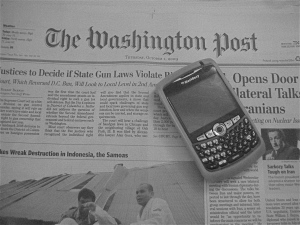










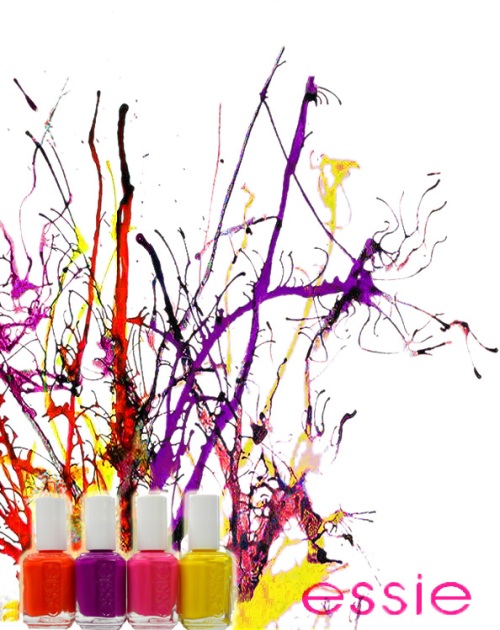 Class #5 Homework, September 29, 2009
Class #5 Homework, September 29, 2009